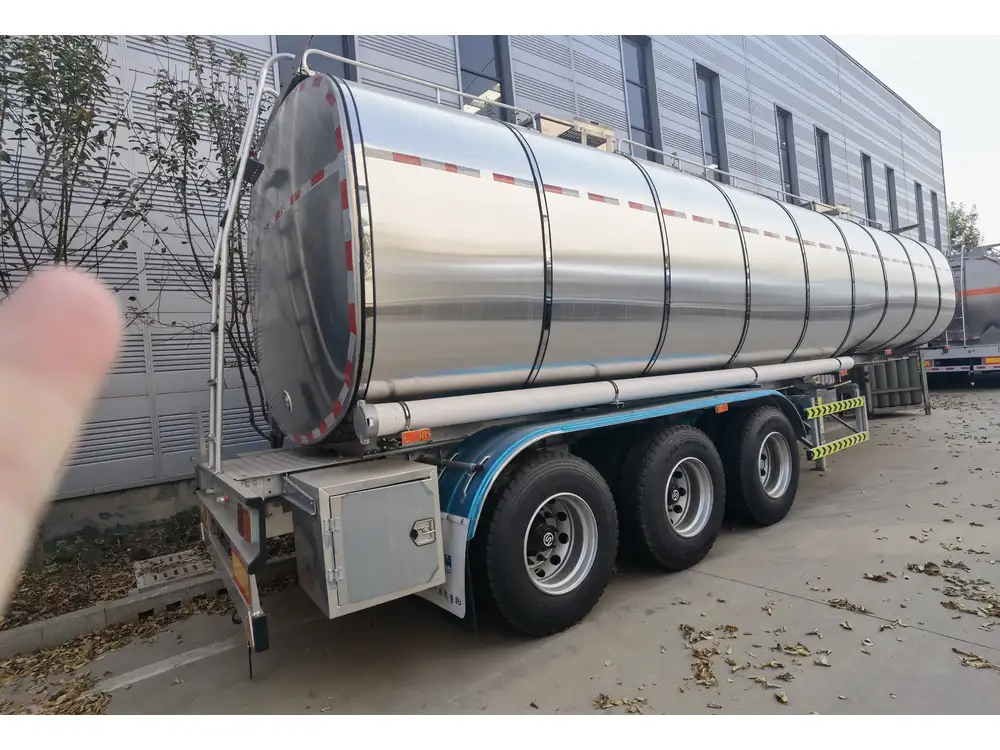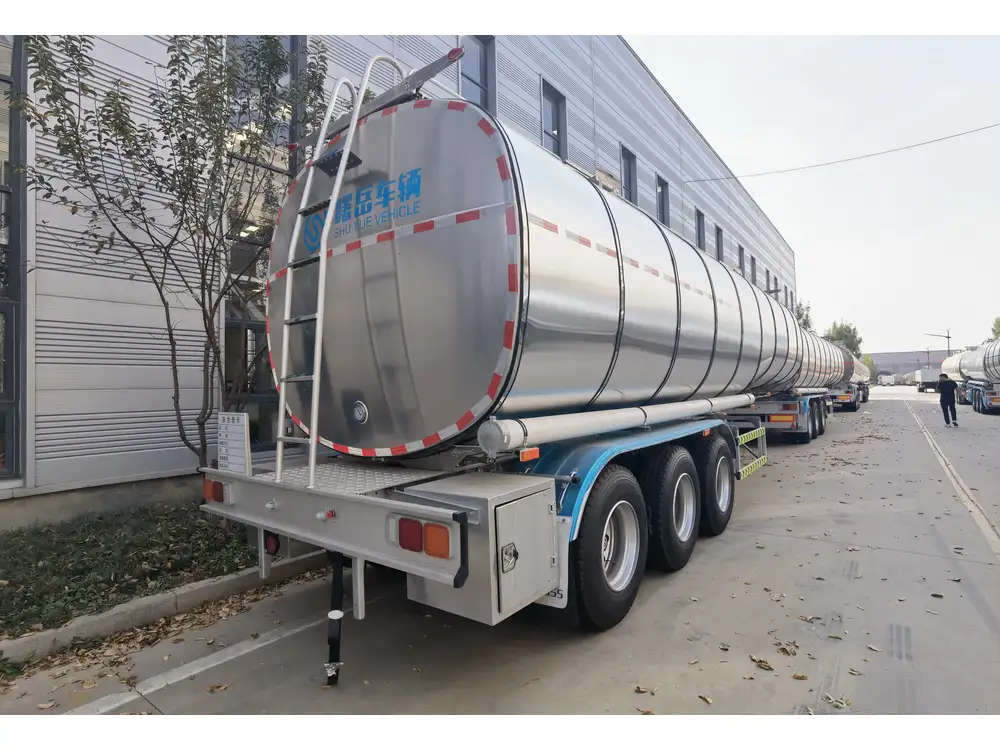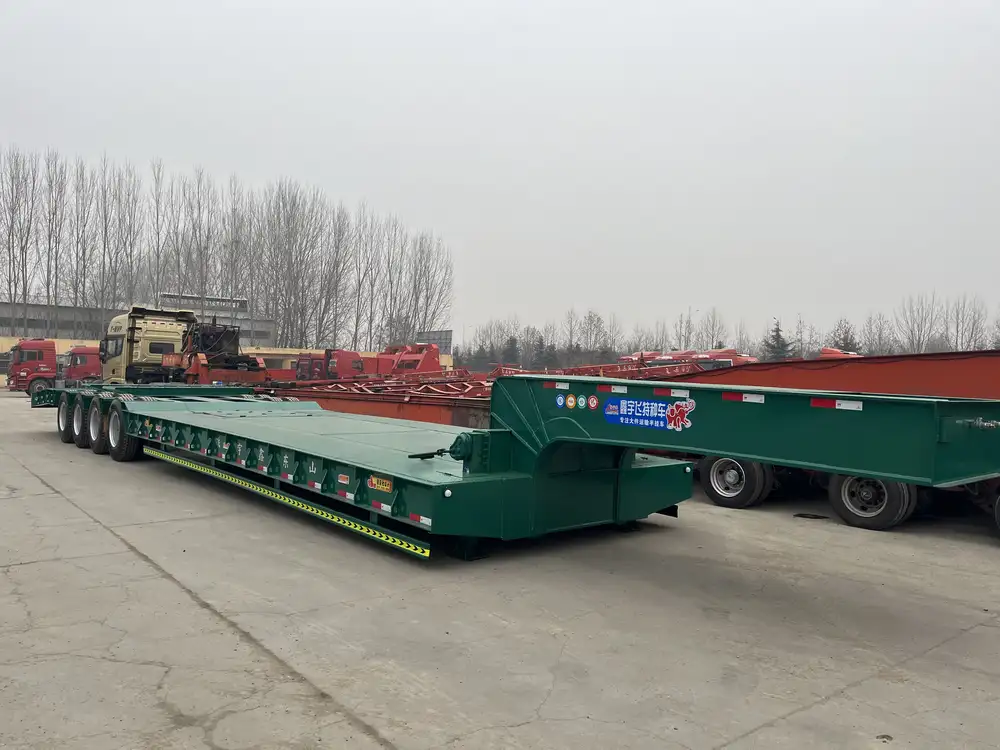Navigating the complexities of driving a flatbed trailer requires not just skill but also a deep understanding of the vehicle, its load, and the roads we travel. Flatbed trailers are versatile and essential for transporting a wide array of goods, from construction materials to oversized equipment. This guide offers critical insights and detailed strategies for effectively and safely driving a flatbed trailer.
Understanding Flatbed Trailers
What is a Flatbed Trailer?
A flatbed trailer is a type of trailer that has a flat, level platform without sides or a roof, designed for easy loading and unloading. Its open design allows for flexibility in transporting large or oddly-shaped items, making it indispensable in various industries.

Types of Flatbed Trailers
Flatbed trailers come in several varieties, each suited for specific loads. Here are some common types:
| Trailer Type | Description |
|---|---|
| Standard Flatbed | Equipped with a flat platform and often used for general freight. |
| Step Deck | Features a lower deck for taller loads, allowing transportation of oversized items without exceeding height restrictions. |
| Drop Deck | A variant that offers lower height in the back for easier loading/unloading of heavy equipment. |
| Curtain Side | Provides protection from weather while allowing ease of access with side curtains. |
| Lowboy | Specifically designed for hauling heavy machinery and low-profile cargo. |
Preparing for the Drive
Pre-Trip Inspection
Before embarking on your journey, conducting a thorough pre-trip inspection is non-negotiable. This ensures safety and compliance with regulations. Here’s a checklist to consider:
- Tires: Check for proper inflation and tread.
- Lights: Ensure all lights, including brake and turn indicators, are functioning.
- Brakes: Inspect for wear and proper operation.
- Load Security: Verify that cargo is properly secured and balanced.
- Mirrors: Adjust mirrors for maximum visibility.
- Coupling Devices: Inspect hitch and locking mechanisms for secure attachment.
- Windshield Condition: Look for cracks or visibility obstructions.

Understanding Your Load
Weight distribution and load security are paramount when driving a flatbed trailer. Here are critical considerations:
- Weight Distribution: Ensure that the load is evenly distributed across the trailer to prevent swaying and maintain balance during transit.
- Securing the Load: Use appropriate tie-downs and secure all cargo to prevent movement that could affect vehicle dynamics.
Driving Techniques for Flatbed Trailers
Initial Driving Considerations
Driving with a flatbed trailer is fundamentally different from driving a standard vehicle. Keep these elements in mind:
- Turning Radius: Flatbed trailers have a larger turning radius, necessitating wide turns to avoid striking curbs or other vehicles.
- Braking Distance: The increased weight requires a greater stopping distance. Maintain a safe following distance.

Key Driving Tips
- Smooth Acceleration and Braking: Sudden movements can cause instability or loss of cargo. Gradual acceleration and deceleration are essential.
- Use of Mirrors: Regularly check your mirrors to remain aware of your surroundings, especially when changing lanes or merging.
- Lane Positioning: Stay centered in your lane, allowing extra space for your trailer’s width when navigating through tight areas.
Navigating Different Road Conditions
Road conditions can significantly affect driving a flatbed trailer. Adapting your driving style is crucial for different environments:
| Road Condition | Driving Tips |
|---|---|
| Wet or Icy Roads | Reduce speed drastically; increase following distance; avoid sudden maneuvers. |
| Hills | Downhill: Reduce speed using engine braking. Uphill: Accelerate gently to maintain momentum. |
| Construction Zones | Stay vigilant for variable signage; reduce speed and be prepared for sudden stops. |
| Urban Areas | Anticipate pedestrian and vehicle behavior; maintain low speeds; position well for turns. |
Load Securing Techniques
Properly securing your load not only ensures the safety of your cargo but also protects other road users. Here are effective techniques for securing cargo on a flatbed trailer:

Tie-Down Methods
- Straps: Use ratchet straps for lightweight cargo. Ensure they are tight without over-compressing the load.
- Chains: For heavier or bulk items, chains are preferable. Use appropriate binders to secure.
- Block and Brace: For wider items, use wood blocks to prevent lateral movement.
Load Distribution Best Practices
- Heaviest Items First: Load heavier items on the bottom and closer to the axle to maintain stability.
- Center of Gravity: Keep the center of gravity low by stacking materials properly.
Legal Considerations

Understanding Regulations
When operating a flatbed trailer, it’s essential to understand and comply with federal and state regulations governing weight limits, load securement, and operating procedures. Here are key legal considerations:
- Weight Limits: Adhere to maximum weight restrictions to avoid fines and ensure safety.
- Permit Requirements: Check if a specific permit is needed for oversized loads.
Safety Gear and Equipment
Always be equipped with the appropriate safety gear:
- Reflective Vests: Wear when loading or unloading for visibility.
- Safety Cones: Set up around your trailer when stopped on the roadway.
Troubleshooting Common Issues

Dealing with Difficulties on the Road
Driving a flatbed trailer may lead to occasional challenges. Here are solutions for common problems:
| Issue | Solution |
|---|---|
| Swaying Trailer | Adjust speed, load distribution, and tighten securement straps. |
| Unbalanced Load | Find a safe location to adjust load distribution and re-secure. |
| Brake Failure | Pump the brakes if possible or utilize engine braking; pull over safely. |
| Tire Blowout | Maintain control and gradually decelerate to a safe stop. Check the spare tire procedure. |
Post-Trip Procedures
Final Checks
After completing your trip, conduct a post-trip inspection. This helps in identifying potential issues before the next haul. Key aspects to review:
- Load Status: Check if any cargo has shifted.
- Trailer Condition: Inspect for wear and tear, ensuring all components are intact.
- Documentation: Ensure relevant paperwork is completed for any loads delivered.

Maintenance Considerations
Regular maintenance is crucial for safety and reliability. Here are vital maintenance tasks:
- Tire Rotation and Replacement: Inspect tire condition regularly and rotate as needed.
- Brake Checks: Regularly inspect brakes for wear, adjusting as necessary.
- Light Functionality: Ensure all lights are operational and replace burnt-out bulbs promptly.
Conclusion
Driving a flatbed trailer is an intricate task that goes beyond merely operating a vehicle. It requires a robust understanding of various nuances, including load management, driving techniques, and navigation of legal requirements. By adhering to the guidelines outlined in this comprehensive guide, drivers can enhance safety, improve efficiency, and ensure successful transport operations.
Whether you’re new to the world of flatbed trailers or an experienced driver seeking a refresher, implementing these strategies will lead to more effective driving practices, a safer experience on the road, and outcomes that lead to repeat business and satisfied customers.
By staying informed of regulations, mastering your driving techniques, and committing to regular inspections and maintenance, you can confidently navigate the challenges of flatbed trailer operation, ensuring the safe and efficient transport of your cargo.



